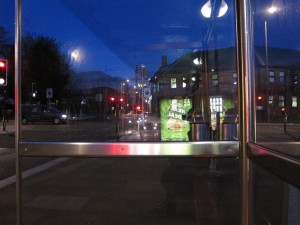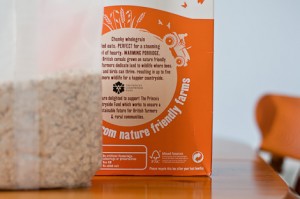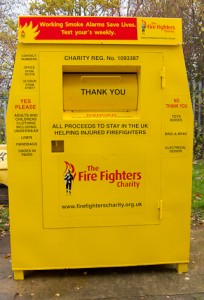Even without a television, I am aware of the so-called Blue Planet 2 effect. Or at least one manifestation of it – the ‘concern’ about the plastic pollution in the oceans.
We now have a Prime Minister calling for the removal of single use plastic ‘wherever possible’. Michael Gove has mentioned plastic and Blue Planet in the House of Commons. There is some rejoicing on social media as the government is consulting on a deposit return scheme for plastic – just as we did in the 1970s for glass. At work I have even had people asking me if we can do some more recycling because ‘We have to save the fishes’.
My first thoughts were why can’t we do the same for Climate Change – make it something people care about? After all, climate change is arguably an even bigger problem. But, I am reliably informed that the series also emphasised the devastating impact of climate change on our oceans – but somehow this seems to have been lost in the press. I am sure there are many theories out there as to why this is the case, but I can think of a couple of reasons. You can see plastic; pictures of seahorses with cotton buds and turtles with plastic in their mouths are memorable. Other than a polar bear without an iceberg, what does the impact of climate change on the oceans look like? Possibly just as important though is that to make an impact on climate change, we all have to change our lifestyles. Whilst these solutions will save households money, for most people not flying, turning down the heating, cutting car use or going meat light are not things that we are willing to do just to save the planet.
But, I hear you say, there are things individuals can do to mitigate the plastic issue – and indeed there are. We can stop using plastic bags (although that only worked when the government slapped a 5p tax on them). We can get a reusable water bottle – that would definitely save money (and I see them being used much more frequently) or a reusable coffee cup (again, I think a tax is the only way, because I rarely see anyone taking a coffee cup into most coffee shops). But these are hardly going to be a lifestyle change compared to giving up a Caribbean holiday or fancy new SUV.
But, once we have our reusable bottle and cup, we can sit back and be pleased with ourselves, because it is the supermarkets’ faults and there is not much more we can do about it, even if we wanted to. And, there is a point – there are increasing shouts on Twitter about the fact that some supermarkets are charging much less money for veg in plastic than loose and unfettered as nature intended, and it seems that the number of items sweating in plastic on the shelves is increasing. Going plastic free often seems to be the expensive option. I can (and now do) buy my milk in glass, but the increase in cost is about having it delivered rather than being in glass – that adds just 1p over the delivered plastic version. The switch to glass is costing me about £100 – but then I have saved half of that amount (and probably done my health some good) by cutting my milk consumption by about 2 pints a week.
If you think I am being a little harsh on my fellow British humans and their motivations, I would point to a recent IPSO Mori poll about the British attitude to plastic. Whilst 85% of those polled were concerned about plastic to some extent (interestingly it was the millennials and GenX who were the least concerned) only 3% believed we consumers had the biggest responsibility to reduce packaging, 27% thought it was down to the companies that make the goods. Most think it is a shared responsibility between companies producing and selling packaged goods, the government and consumers (and I would tend to agree).
Given that 85% of us think there needs to be a solution, it appears that other than reusing bags and bottles (but worryingly only 75% of those polled are willing to make this small change) only a measly 14% would pay more Council Tax to improve recycling and only 12% would pay more for goods with no packaging that can’t be recycled.
Hmm, something doesn’t add up because although we are not willing to pay more, almost half of those questioned felt that in order to help sort the plastic pollution problem there should be a tax on retailers who produce a lot of unrecyclable packaging (which there already is) and that councils should be forced to spend more on recycling facilities (a lot of the facilities are already there…) Surprisingly (not) a fine on householders that don’t recycle (yes, some of my neighbours, that’s you) was not deemed likely to be effective to solve the plastic problem.
So, I am not convinced there is a Blue Planet 2 effect. If there is will it last? (Not if it requires consumers to take the initiative and change things.) And, why have the Netherlands got the first plastic free supermarket aisle and not the UK?



